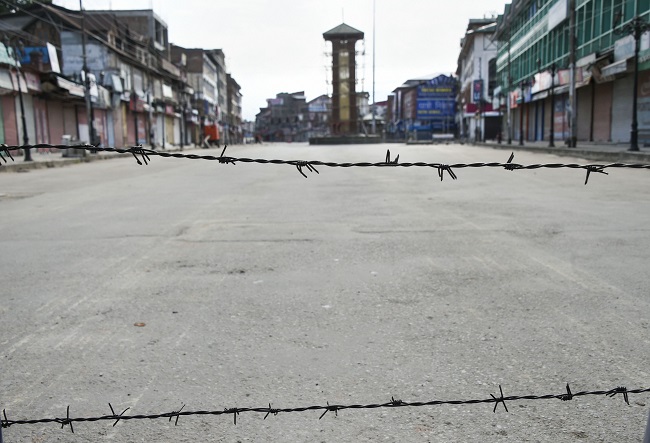
Hypocrisy has been the hallmark of Indian political discourse. It had never been as glaring as in the case of Jammu and Kashmir. Since 1947, we had been blaming Pakistan, Abdullahs, Muftis, Gilani and their surrogates for bloodshed in the state. But the truth is, successive political leaderships in Delhi led the Kashmiris on to this bloodied path either by conspiring with them or remaining an onlooker to their refusal to accept India as their home. The idea that they were ‘special’ and different from the rest of the country was solely our own construction.
Unlike 567 princely states that merged their identity with India after independence, Kashmiris were actually encouraged to believe that they had a choice to merge either with India or Pakistan at their will. Though Maharaja Hari Singh, the then ruler of J&K, had acceded his state to the Dominion of India on 26 October, 1947, Nehru chose not to accept his offer as a fait accompli and approached the United Nations.
The rest is history, how Nehru rushed to the UN in January 1949, complaining about Pakistan’s aggression in 1948 and how he agreed to the UNSC (United Nations Security Council) resolution that provided for UN-supervised plebiscite to decide J&K’s final accession. Wish, Nehru had waited for an opportune time to legitimately integrate occupied areas of J&K from China and Pakistan rather than fall for the UN’s mediation.
The reference of Kashmir to the UN had three troubling implications. One, J&K became a disputed territory, enabling Pakistan to be a party to its resolution. No wonder, Abdullahs, Muftis, Hurriyat leaders and liberal elites always insisted on holding dialogue with Islamabad for a final settlement. Second, before the plebiscite would be held under the UN supervision, Pakistani forces were to be withdrawn from Jammu & Kashmir (Pakistan-occupied Kashmir–POK). We did make noises that since Pakistan was the invader they should withdraw from PoK unconditionally, but UN never took a cognizance of our position, which was milked by Pakistan to its advantage. Third, the provision of plebiscite emboldened Kashmiris to imagine that they had a fundamental right to decide whether to stay with India or Pakistan.
The right to self-determination had two far reaching consequences; Kashmiris began claiming that no settlement could be reached unless they were also involved in the negotiating process. Second, religion emerged as a key factor that would determine the outcome of the plebiscite. Islamabad rightly grabbed this window of opportunity and began Islamizing J&K. The result was the rise of Wahhabism that led to the genocide of thousands of Kashmiri Pandits and flight of five lakh of them to India and abroad as refugees. This was followed by a larges cale conversion of Buddhists whose population went down from 81% in 1981 to 40% in 2018, while Muslim population recorded an unprecedented annual growth of 23.7%. Not only that, 3 lakh Hindu refugees– mostly from the scheduled caste – who came from Pakistan after partition and settled in J&K, were deliberately denied of voting and all other rights of a J&K citizen.
Nehru’s pandering of Sheikh Abdullah
It was not just the idea of plebiscite that played the devil. New Delhi also took a series of fatal initiatives that ingrained separatism in Kashmiris. From day one, Nehru pandered Sheikh Abdullah. Hoping to seal Sheikh’s fidelity, he allowed J&K to have its own constituent assembly in 1951 to formulate its own constitution which restricted the jurisdiction of Indian parliament and union government to miniscule and provided for a president, prime minister, a separate flag and power to frame its laws to decide as to who will be its permanent residents.
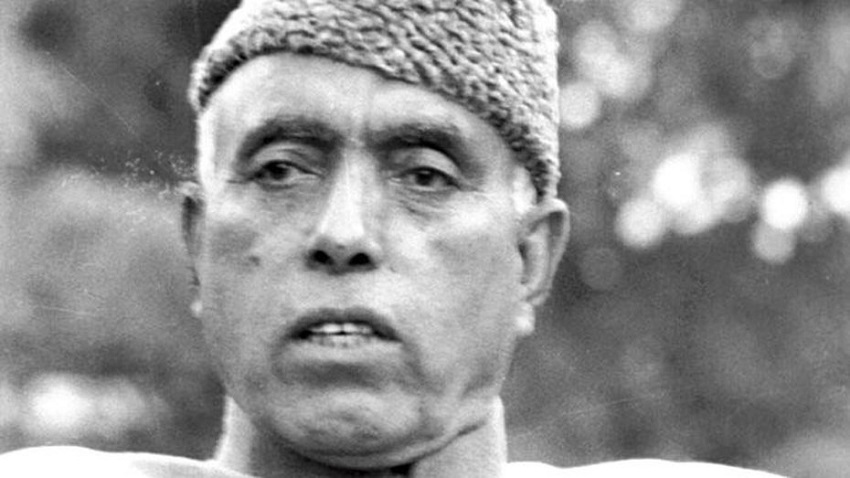
Nehru’s molly-cuddling did not end there. Under Part 21 of the Indian constitution, Article 370 was incorporated giving J&K a quasi-independent status, meaning that the state could now deal with all matters except for finance, defense and foreign affairs. Worse, Nehru then got a Presidential Order inserted in the constitution in 1954 as Article 35A, that clearly defined a separate set of laws governing citizenship, permanent residency, property and fundamental rights. In doing so, he virtually conceded to J&K a constitutional status, befitting a nation unlike any other state and union territory of India. One mischievous manifestation of this dispensation was Farooq Abdullah’s refusal to implement delimitation of the parliamentary and assembly constituencies. His fear was that it might give Jammu region a majority in the J&K Assembly based on its population (14, 689,775) vis-a-vis Kashmir (12, 500,000) and threaten his divine rulership by someone who was not from the Kashmir Valley.
These constitutional freebees inspired Kashmiris to keep weighing the benefits of their loyalty to Pakistan or India. The question now was which of the two would pay more – India in terms of financial resources and Pakistan in terms of helping them harden their bargaining position by carrying out terror attacks and subverting Kashmiri youths. It no longer made any sense to Kashmiris to abandon brinkmanship when Delhi was ever eager to appease and splurge to earn their allegiance. During past 16 years alone, New Delhi has pumped in ₹1.14 lakh crores which is 10% of all central grants earmarked for the remaining states and union territories for a state with barely 1% of India’s population. In simple terms, New Delhi spent ₹91,300 rupees per annum on each individual Kashmiri whereas UP with 25% of country’s population, received a meagre ₹4,300 per person annually.
Interestingly, despite this financial bonanza 80% Kashmiris continued to be deprived of education, water, electricity, health benefits etc, while the political and separatist leaders prospered disproportionately. The reason was compelling. If people could be kept uneducated and economically backward, Jamaat and Hurriyat would find it easier to radicalize Kashmiris for merging with Pakistan, whereas the likes of Abdullahs and Muftis will try to extract New Delhi’s last pound of flesh.
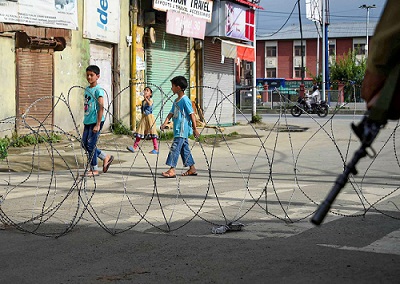
Appeasement of Kashmiris — The Colossal Cost
The cost of New Delhi’s hypocrisy in appeasing Kashmiris has been colossal. Nearly 57,172 persons have been killed since 1988, including 19,903 civilians, 28,745 terrorists and 8,524 services personnel. 8,000 civilians and 2,600 men in uniform have been injured and 784 working days lost to strike, violent agitations and forced shutdown of shops and schools. Besides, separatists organized relentless stone-pelting at the security forces on 7,443 occasions in last three and half years alone. The sheer repetitiveness of these incidents of violence had started taking a toll on Indian psyche. People were exasperated at what was happening in the state and wondered if it was worthwhile retaining J&K. The nation could no longer afford the pervasive cynicism and it had to tell Kashmiris bluntly that their future lay with India.
However, journalists who have been rendered irrelevant by the ruling NDA (National Democratic Alliance), liberal elites, leaders of opposition political parties and human rights activists would have still preferred walking on blood-stained streets of J&K for the vacuous liberty of a few. Obviously, their hypocrisy in applying individual morality to define responsibility of the state had clouded their understanding of real issues at stake. Even today, like Pak PM Imran Khan, they imagine that if they can step up and sustain their lies and noise a bit longer, the August 5 decision to de-operationalize Article 370 and 35A can be reversed. Taking this hope forward, they have been whining that, ‘…….J&K is under Army’s ‘occupation,’ there is no civil liberty and absolutely no freedom of communication, movement and speech, thousands of political leaders and activists are kept in jails where conditions are worse than those under Nazis, the state has been turned into a ghetto controlled by vultures in uniform, administration has collapsed, patients are dying, schools are closed, markets are deserted and farm produces are rotting.’ J&K, they say, is now ‘like a ghost town where people are either dead or dying, fear stalks everywhere with human rights abuses being committed daily on a scale that is unprecedented in human history’. And, then comes their forecast of what is going to happen next – ‘whatever hope India had of holding on to J&K is gone forever.’ ‘Majority of Kashmiris who had some sympathy for India and disliked Pakistan and terrorists are waiting to rise in a massive revolt in the name of Islam, once security restrictions are lifted.’ Their propaganda could not have been more bizarre.
However, their catcalls may not reflect the ground realities but will surely excite Imran Khan, Labour party in Britain, New York Times, BBC, a few Democrat congressmen in the US, Turkey and China that are notorious for human rights abuses against Kurds and Uighur Muslims respectively. It is no surprise that even 600 scientists and academicians got swayed by their propaganda and wrote to PM Modi, based on their peripheral understanding of the complexity of the problem. Being professionals, they should have realized that in the absence of experience in handling insurgency, this matter must be left in the hands of experts and political leadership.
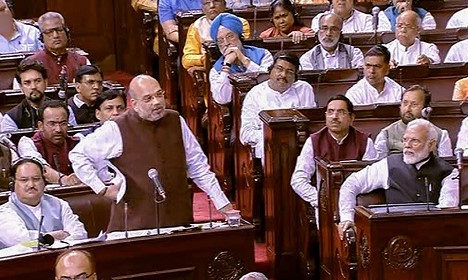
Impatience has no room in history. Since August 5, when Art 370 was revoked, it has been barely sixty days which is too little a time for complete normalcy to return to J&K. Let’s not forget that the state had remained a battlefield for seventy years. A decade, therefore, is a reasonable period to put the state back on the path to peace and progress. Since the foremost priority is to restore law and order, restrictions can only be removed slowly and in phases. Pak Army that faces an existential crisis in the wake of this development, is not going to give up easily. Wresting Kashmir, ‘it’s jugular vein’, had been its raison d’etre for positioning itself as the final arbiter of Pakistan’s politics and security. Short of declaring a war, Pak Army will, therefore, spare no effort to keep the pot boiling in J&K. Infiltration of terrorists and Jihadis, ceasefire violations and relentless subversive propaganda are among the tools it will employ for this purpose. Indian security forces have indeed their role neatly worked out. They have to dig in their heels for a long haul till Pakistan pays heavily for its suicidal mis-adventurism.
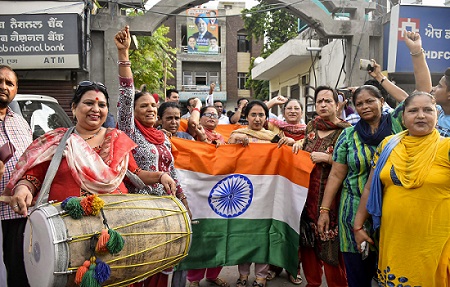
Let’s also not kid ourselves that Ram Rajya will dawn in J&K in a few months or years. To expect that nearly three generations of Kashmiris who were born, groomed and indoctrinated in Wahhabism and told to fight Indians till their last breath for independence will suddenly have a change of heart and accept the new reality. In any case, secessionism and insurgency are not something India has not been combating effectively to sustain its integrity. It took 67 years to quell the Naga insurgency, 20 years to bring Mizos in the national mainstream and 32 and 13 years to tame the ULFA (United Liberation Front of Assam) and PLA (People’s Liberation Army of Manipur) respectively. The Naxalite movement that began in 1967 in West Bengal continues to defy the lawful authority with guns and bombs in eight states of India. Significantly, leaders and activists of these outfits had also been trained, funded, armed and provided sanctuaries by Pakistan and China and their common objective was also to fight for a sovereign independent nation. J&K case is no different from theirs. But with an outpouring of nationwide support for the dilution of Article 370, and a stable, strong and decisive central government in place, there is no reason why Kashmiris cannot be made to understand the utter futility of living outside the Indian mainstream for a happier and prosperous future.
